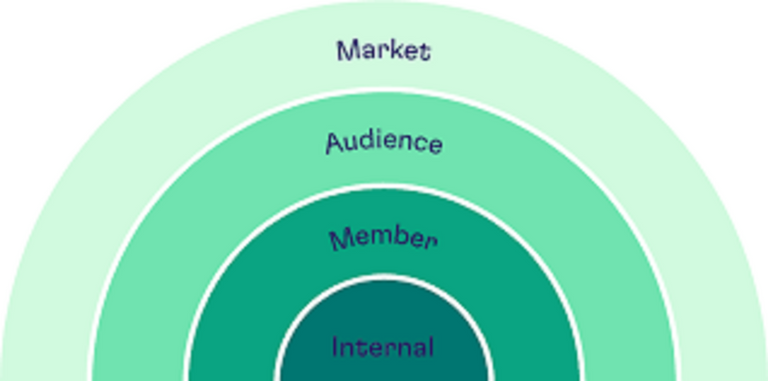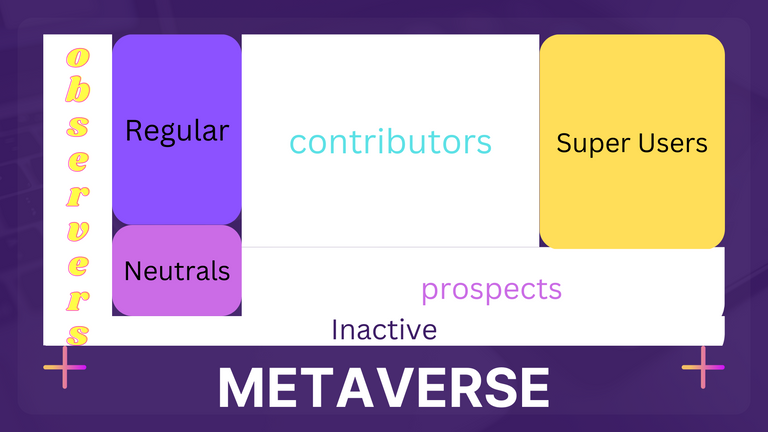In a community-led system, communities own the whole business process and participate in its development with their collective wisdom. They become part of the team intrinsically with their constant feedback, and suggestions to improve the product and reduce the rework.
How community-led helps the ecosystem?
Deeply integrating community with every part of your business drives clarity, outcome, and value in a scalable and sustainable way.
- Increased customer retention
- Earned trust that will benefit the brand and organization
- Frequently high-quality customer feedback
- Reduced dependencies on paid feedback
Model of Community-led Systems
The layer of the community-led system can be described in the following model.

It drives revenue, satisfaction, and retention, ignites product innovation, and decreases cost, inefficiencies, and rework.
Community-led ecosystem can help the product in marketing, sales, improvement, and in many other ways. Users behave differently in a community. They can help with a different aspects.

The the system can value the community in a different manners. Members value by consistency, frequency, and impact of their contribution.
Examples
Following communities could be the few examples of community led systems.
Community of product:
It provide support, and feedback, resolve queries, build trust, and upgrade the product with suggestions, and innovation.
Community of practice:
Members discuss similar or shared professions, skills, practices, and multiple products that could be involved. They become better in the skill, teach others, find customers, increase affinity, thought leadership.
Community of interest:
Focused on interest-based connections, centered around hobbies or passion, like video games, traveling, cars, real estate, investment, etc. The goal could be to find people with the same interests.
Suggestions to build community-led ecosystem.
If you are looking to develop a DAO, or community-led ecosystem, follow the roadmap. Having said so, community-led ecosystem is a continuous process. The community needs to be educated continuously.
- Develop a strategy with the community at the center.
- Align product/service goals with community goals.
- You should be able to describe why are you doing this within one breath.
- Build a robust community team. Make sure, they are ready to develop change.
- Solve business problems, calculate ROI, and tell compelling stories to gain community trust.
Community Led Ecosystem and DAOs
Decentralized autonomous organizations, or DAOs, have been gaining popularity in recent years as a way to create community-led ecosystems that are more efficient, transparent, and fair.
One of the biggest advantages of DAOs is that they are decentralized, meaning that there is no central authority or single point of control. Instead, decision-making power is distributed among all members of the ecosystem. This allows for a more democratic and inclusive process, where everyone has an equal say in how things are run.
Another benefit of DAOs is that they are autonomous, meaning that they can operate independently without the need for human intervention. This allows for more efficient use of resources, as well as a reduction in the potential for corruption or mismanagement.
Transparency fosters Progress
One of the most important aspects of DAOs is that they are transparent. All transactions and decisions are recorded on a public blockchain, which allows for complete transparency and accountability. This helps to ensure that all members of the ecosystem have access to the same information and that there is no room for hidden agendas or manipulation.
Evolution with DAOs
Lastly, DAOs are also highly adaptable and flexible, which means that they can evolve and change over time to meet the needs of the community. This is important as the world is constantly changing and new challenges arise, and the community can use DAO to adapt and respond to these challenges more effectively.
Conclusion:
Community-led ecosystems are more efficient, transparent, fair, and adaptable. They provide a new way for people to come together and collaborate on projects and initiatives that benefit everyone. With the right leadership and community engagement, such ecosystems have the potential to change the way we think about organization and decision-making.